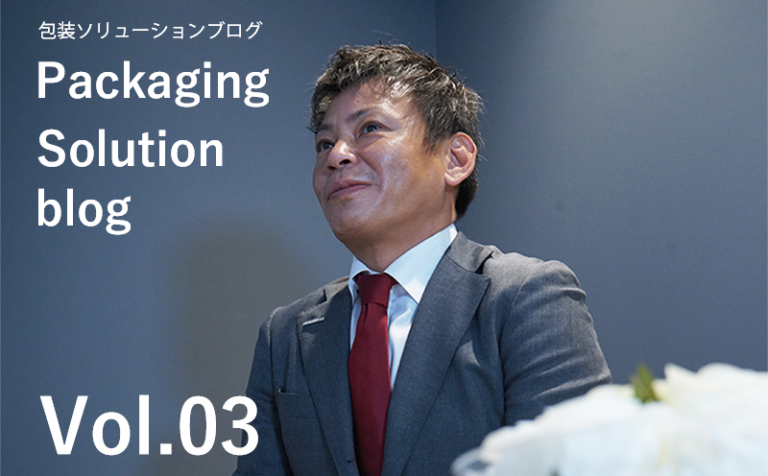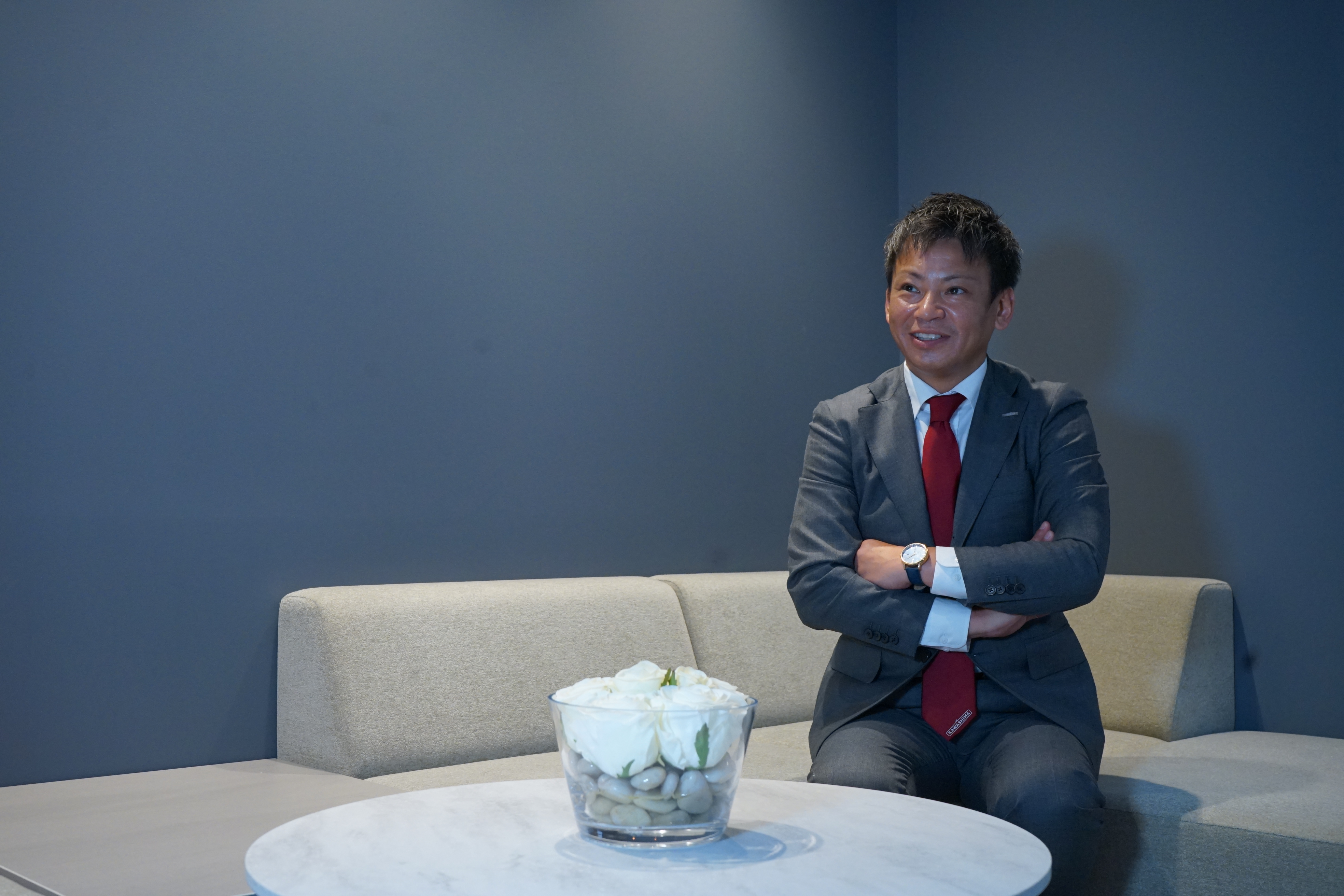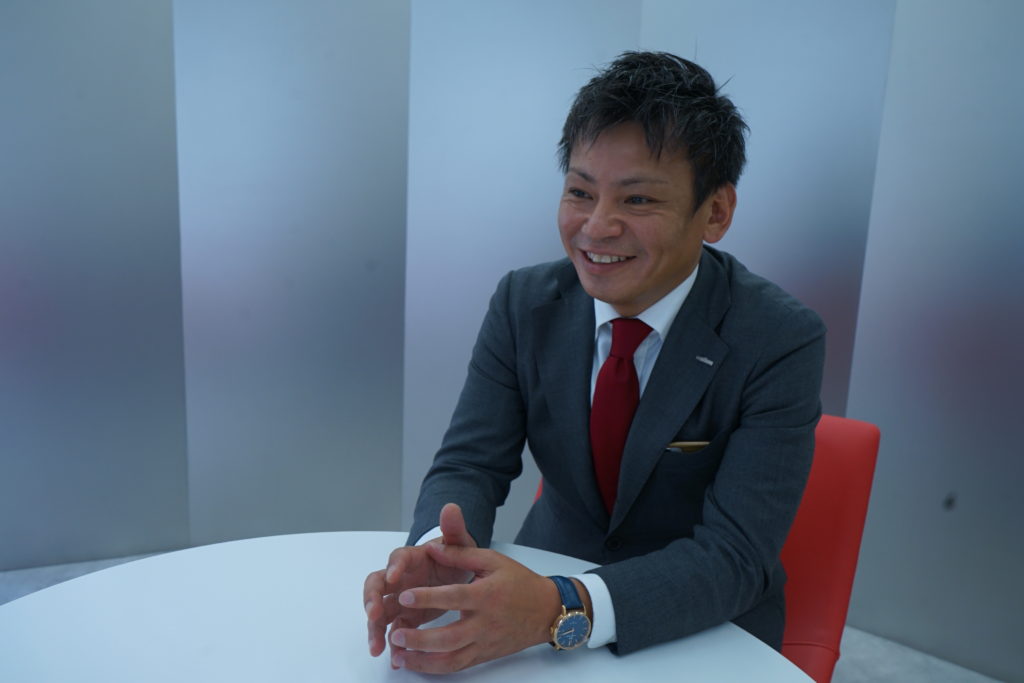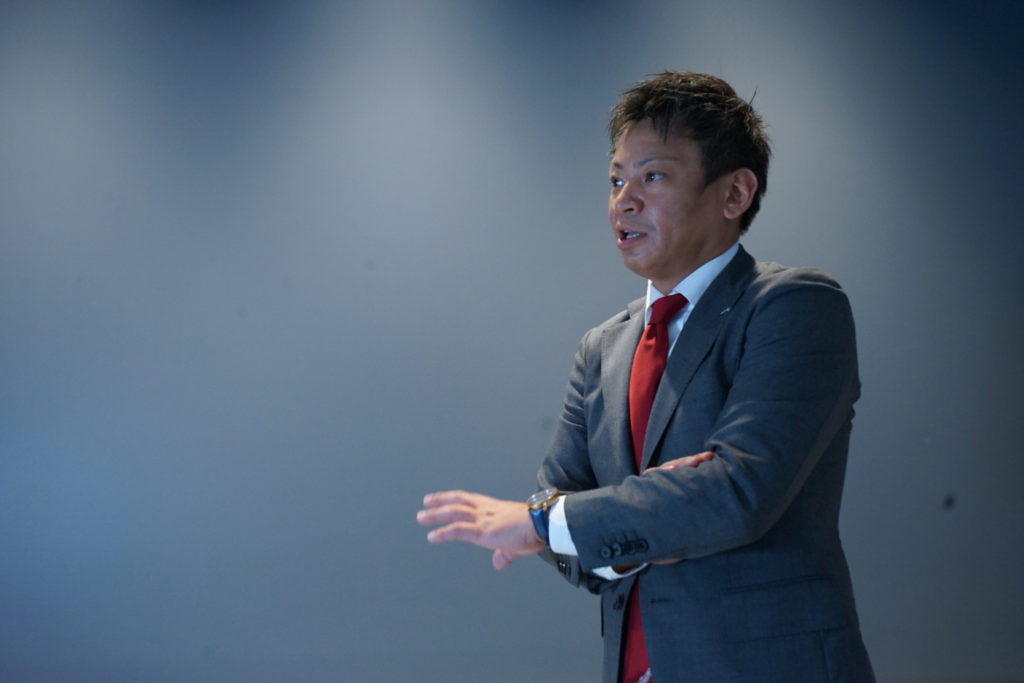
Change even logistics! What is the packaging environmental technology that is optimized for the environmental era?
-
- Category:
- COLUMN
-
- Date:
- May.15.2024
Interview with Kenkichi Abe, General manager, Solution Strategy Department at Kawashima Packaging Machinery Ltd.
Measures for SDGs/carbon neutrality and the future led by the latest environmental technology
Changes in consumer awareness and the market environment are now spreading across the world as a major trend. Environmental awareness of the public has grown rapidly over the past few years, resulting in SDGs as the fruition. Corporate management is under great pressure from the external environment, such as rising energy costs and a competitive environment that makes it difficult to differentiate. How can we continue to grow sustainably in this era of dramatic change? Kenkichi Abe, head of the Packaging Solutions Strategy Office, will talk about the response of Kawashima Packaging Machinery Ltd. to SDGs and carbon neutrality, the progress of the latest environmental technology, and the innovative packaging technology that will lead the future and solve the challenges faced by food manufacturing sites.

Kenkichi Abe, General manager, Solution Strategy Department at Kawashima Packaging Machinery Ltd.
Change even logistics! What is the packaging environmental technology that is optimized for the environmental era?
Environmental considerations through packaging
>Last time, we talked about the environmental considerations that can be achieved through packaging materials. I heard that there is a environmental-friendly movement of replacing plastic packaging with paper and switching from petroleum-based plastics to plant-based, or bioplastics.
Abe: That’s right. However, paper or bioplastic packaging materials costs more than conventional plastic materials. For example, paper requires a large amount of “heat” to remove moisture from it during manufacturing. Approximately 30% of this energy source currently uses coal*1. The use of coal generates CO2. Even though alternative fuels are available, coal still has significant advantages such as lower prices and less regional uneven distribution, so the dependence on coal is still very high.
However, most of the coal is imported from overseas, and looking at Japan’s coal import ratio by country in 2020, Australia was in first place at 68%, followed by Russia at 15%*2. In April 2022, due to problems caused by the international situation, the government announced the abolition of coal imports from Russia. There is also a movement in the paper manufacturing industry to switch to imports from countries other than Russia, such as Indonesia. As global demand increases, the price of coal from alternative sources has soared. Due to the lack of coal, some companies are unable to produce paper as usual, and paper prices are soaring.
>Packaging materials are made by laminating multiple materials with different functions together. I imagine it would be also difficult to process paper.
Abe: There are two main methods for laminating materials: extrusion lamination and dry lamination. Extrusion lamination is cheaper, but plastic resins such as polypropylene and polyethylene are often used to bond functional materials together. This creates a contradiction in that packaging material is changed into paper to eliminate plastics, but plastic resin must be bonded to the paper material. Therefore, when adding functions to paper materials, dry lamination is generally used. It is a bonding method in which an adhesive dissolved in an organic solvent is applied to the surface of a paper, which is then dried and pressure-bonded to be attached to a functional material. However, if you try dry laminating normally, the adhesive will soak into the paper and it won’t work. Dry lamination, which involves bonding paper and functional materials together, is very difficult, and only a few manufacturers in Japan can do dry lamination of paper. As more and more companies are starting to switch packaging materials from plastic to paper, demand for dry lamination of paper has skyrocketed, causing its price to rise, and companies to wait for the processing.
>Changing packaging materials from plastic to paper is likely to be quite costly. However, bioplastics are also expensive. Product prices are also likely to be affected, and some consumers may think, “I don’t want the price to go up just because of a change in packaging, even though the contents and quantity of the product remain the same.”
Abe: Consideration for the environment, including SDGs, is extremely important. If we focus on changing the packaging material, the cost will inevitably be higher than before. If we say, ‟We have raised the price of a product to be environmentally friendly,” how many people will buy it? Many people agree with the SDGs, but if the price actually goes up, they tend not to buy the product and instead choose something cheaper. For this reason, paper and bioplastics have not been widely used.
>However, we need to address the issue of climate change.
Abe: Yes. However, Japan has been in a state of deflation for decades. In any case, we have to cut costs. How can we make a profit out of this? Companies have made a lot of efforts. One of the things we have been working on is making the packaging material thinner.
>In order to reduce costs, efforts have been made to make packaging materials thinner so as to reduce plastic usage.
Abe: Yes. Packaging materials are now so thin that they cannot be made any thinner. So what should we do next to reduce the amount of plastic we use? What has been considered here is “reducing the size of the bag.”

*1 Energy composition of the pulp and paper industry 2019/Source: Ministry of Economy, Trade and Industry “Annual Report on Trends in Oil Consumption”
【reference】
Energy situation in the pulp and paper industry 2020 edition (2019 results) P3
Energy composition of the pulp and paper industry 2019
Source: Ministry of Economy, Trade and Industry, “Annual Report on Trends in Petroleum Consumption,” Prepared by: Japan Paper Federation
https://www.jpa.gr.jp/file/release/20210225034339-1.pdf
*2 Japan’s coal import ratio by country/Source: JOGMEC
【reference】
Nikkei Shimbun April 8, 2022 19:21 Article reference
https://www.nikkei.com/article/DGXZQOUC251NL0V20C22A3000000/
◆5th Coal Briefing P9
Percentage of Japan’s coal imports by country (2020)
https://coal.jogmec.go.jp/content/300373354.pdf
◆Created from Ministry of Finance trade statistics
http://www.ene100.jp/www/wp-content/uploads/zumen/1-2-4.pdf
Packaging technology that fits the product perfectly
>What methods can you think of to make the bag smaller?
Abe: There are two main points. One is to make the sealed part that closes the bag thinner to reduce the overall size of the bag. Another thing is to reduce the extra space when putting products into bags. Regarding making the sealed margin thinner, every packaging company is working on it, and so do we. We try to determine a sealing width that is barely enough to keep the adhesive together without leaving the mouth of the bag open, while also to not hinder the convenience of opening the bag.
>Regarding The second point, reducing excess space, does it mean to make the packaging more fitted so that the same size and amount of items can be fitted into smaller bags?
Abe: Yes. Due to the structure of packaging machines that place products into bags one after another on a moving line, there is inevitably a gap between the food and the sealing. How much can this gap be narrowed? After extensive research, we have developed a unique new technology that allows the bag to be sealed right next to the margins of the food inside. For example, with regards to ‟horizontal pillow packaging machines,” which package products inserted horizontally from the side, a method called ‟two-stage end seal closure” that moves the packaging film and the cutter separately, is used to push the product firmly into the back of the bag while pressing it, so that the product can be placed more deeply into the bag. By doing this, there is no extra space in the bag, and the product can be packaged in a size that perfectly matches it. In addition, vertical pillow packaging machines insert the product from above and then close the opening. By pushing the bag-shaped packaging material slightly downward, the gusset of the bag expands so that the product can sink to the bottom. This shortens the distance between the product and the sealing.
>By pushing the product or letting it sink into the bag, you reduce the extra gap between the bag and the product. I think if there are no gaps, the products will no longer move around inside the bag. It is also suitable for packaging items that break easily, such as rice crackers and cookies.
Abe: In fact, if there is a gap in the bag for items such as rice crackers that are light and easy to move, the product will sink to the bottom when displayed, and cause the bottom of the package to bulge, making it difficult to be displayed and easily broken. Up until now, we have been able to avoid the bulge at the bottom by placing individually wrapped items on plastic trays, but as part of efforts to reduce plastic with SDGs in mind, there are calls for eliminating trays. With a new packaging machine, you can wrap products without any extra gaps, so even if you don’t have a tray, products won’t sink and can be displayed neatly.
> Until now, there have been machines that can push products deep inside.
Abe: The mechanism of those machines is to make a bag and use a bar to push the product deep into the bag. However, pushing with a bar requires returning the bar to its original position, which takes time. Although it is possible to package small items, the disadvantage is that the packaging speed is very slow. The new “two-stage closure” was created to eliminate this disadvantage.

If packaging changes, logistics will also change.
>By creating packaging that perfectly fits the product without any gaps, the size of the bag can be made smaller than before. If the packaging material is plastic, it is possible to reduce the amount of plastic, and if the packaging material is paper or bioplastic, the total amount of packaging material is reduced, which also reduces costs.
Abe: That’s right. But that’s not the only benefit of making packaging more compact. Smaller bags also mean smaller cardboard boxes for shipping to retailers across the country. Also, if the size of the box does not change, more products can be packed into the box. In other words, more products can be transported at once than before. Products are usually transported by placing cardboard boxes filled with products on a rectangular platform called a pallet, which is then transported by truck. This pallet has a standard and a fixed size. If the size of the box to be loaded becomes smaller, more boxes can be stacked.
>In other words, if you used to stack 12 boxes on one pallet, you can now stack 16 boxes. You can transport more products at once to stores such as supermarkets.
Abe: Transporting items twice instead of three times not only reduces transportation costs, but also reduces the distance traveled by trucks and thus reduces the amount of carbon dioxide emitted by trucks.
>That’s certainly true. When we talk about making bags smaller, we tend to think of it as reducing the amount of plastic used in packaging, but furthermore, it also contributes to the efficiency of logistics.
Abe: Yes. Making packaging smaller can lower the cost of packaging materials, lower transportation costs, and reduce the amount of carbon dioxide emitted. However, currently, most packaging machine manufacturers decide packaging dimensions based on product size. In the future, we will think about how to transport efficiently to reduce transportation costs, what kind of boxes should be used and how to stack the products, and what size of bags should be used to achieve transportation efficiency. We would like to create a packaging machine that can meet customer requests such as ‟I want to put things in a bag of that size, even if it is a little tight.” Additionally, there is currently a shortage of deliverers in the logistics industry. For this reason, companies are considering improving transportation efficiency and using transportation methods that require as little human intervention as possible, such as drones.
>There has already been news about the trial use of drones for delivery services.
Abe: It is not yet at the practical stage, and we do not know what will happen in the future. However, if we were to seriously use drones for transportation, we would need packaging that is efficient for drone transportation. We believe that by considering everything from a total perspective, including logistics, we can open up new possibilities for packaging.
(To be continued)




